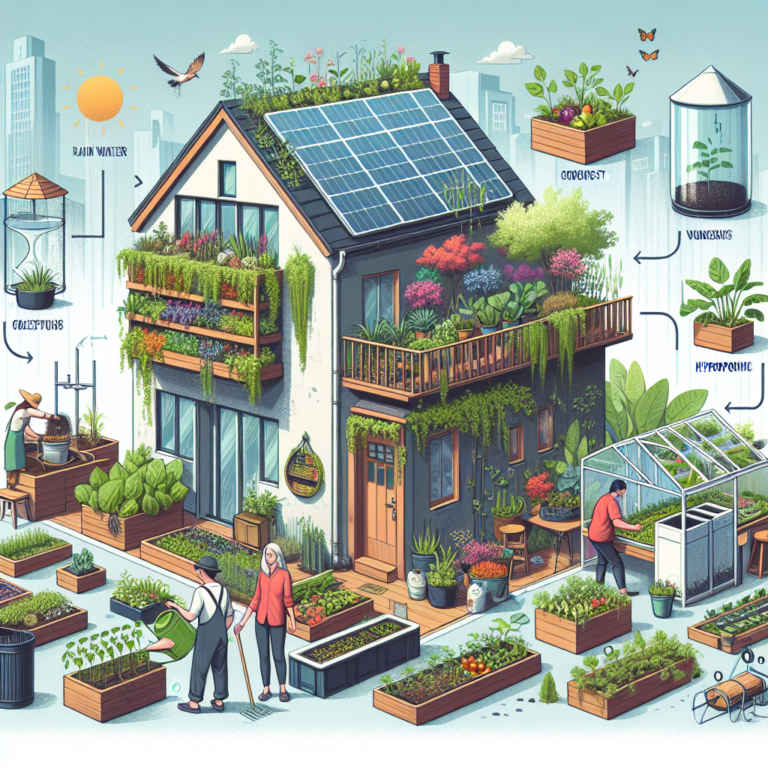As the world’s population continues to grow and urban populations continue to rise, the need for sustainable and innovative solutions to food production becomes increasingly important. Urban farming is one such solution that allows people to grow their own food in an urban setting, often in small or unconventional spaces. If you’re interested in trying your hand at urban farming, here are 10 innovative ideas to get you started.
1. Vertical gardening: Vertical gardening is a space-saving technique that involves growing plants on walls, fences, or other vertical structures. This not only maximizes the use of space but also creates a visually appealing and unique garden. Some good plants for vertical gardening include herbs, strawberries, and leafy greens.
2. Rooftop farming: Rooftop farming involves growing plants on the rooftops of buildings. This idea is especially popular in urban areas where land is limited. You can set up raised beds or container gardens on your rooftop and grow a variety of crops, such as tomatoes, peppers, and cucumbers.
3. Aquaponics: Aquaponics is a system that combines aquaculture (fish farming) with hydroponics (growing plants in water). In an aquaponics system, fish waste provides nutrients for the plants, while the plants help filter the water for the fish. This closed-loop system is highly efficient and can be set up in a small space, making it ideal for urban farming.
4. Microgreens: Microgreens are young, edible seedlings of vegetables and herbs that are harvested after just a few weeks of growth. They are packed with flavor and nutrients, making them a popular choice for urban farmers. Microgreens can be grown indoors in trays or containers and require minimal space and maintenance.
5. Mushroom farming: Mushroom farming is a great option for urban farmers looking to grow something different. Mushrooms can be grown indoors in containers or on logs, making them a versatile and low-maintenance crop. Some popular varieties to try include oyster, shiitake, and oyster mushrooms.
6. Hydroponics: Hydroponics is a method of growing plants without soil, using a nutrient-rich water solution instead. This technique is highly efficient and can be used to grow a wide variety of crops, from lettuce and herbs to tomatoes and strawberries. Hydroponic systems can be set up indoors or outdoors and are a great way to maximize space and resources.
7. Beekeeping: Urban beekeeping is a unique and rewarding way to support pollinators and produce your own honey. Bees can thrive in urban environments and help pollinate your garden crops as well. Before starting a beekeeping operation, be sure to check local regulations and educate yourself on best practices for keeping bees in an urban setting.
8. Food forests: Food forests are designed to mimic the structure of a natural forest, with layers of plants that provide food, shelter, and habitat for wildlife. Food forests can be established in urban areas and can include a mix of fruit trees, berry bushes, perennial vegetables, and herbs. This sustainable approach to farming encourages biodiversity and requires minimal maintenance once established.
9. Composting: Composting is an essential part of urban farming, as it helps reduce waste and create nutrient-rich soil for your plants. You can set up a composting bin or vermicomposting (worm composting) system in your home or garden to turn food scraps and yard waste into valuable compost. Compost can be used to fertilize your plants and improve soil health.
10. Community gardens: Community gardens are a great way to engage with your neighbors and share resources for urban farming. Many cities have community garden programs where residents can rent a plot of land to grow their own food. You can also consider starting a community garden in your neighborhood to promote local food production and community building.
Overall, urban farming offers a wealth of opportunities for creativity, sustainability, and self-sufficiency. Whether you have a small balcony or a rooftop garden, there are plenty of innovative ideas to try in your home. By experimenting with different techniques and crops, you can discover what works best for your space and interests, and enjoy the fresh, homegrown produce that urban farming has to offer.
